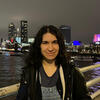AI makes first detection, identification and classification of a supernova

The astronomical community have taken a leap in the development of automated technology with the first detection, identification and classification of a supernova using AI. An international collaboration led by Northwestern University have created an automated system which searches the night sky for these bright, death objects without needing help from humans. This software is extremely valuable, since detecting and classifying supernovae is a lengthy process, therefore cutting out the middleman – humans – reduces the time and effort significantly.
The robotic tool, dubbed the Bright Transient Survey bot (BTSbot) was launched last week. Following the launch, the team alerted the astronomical community of this crucial software. Currently, astronomers spend hours and hours visually inspecting and classifying supernovae – around 2,200 hours in the past 6 years! Working together with robotic systems, the same sections of the night sky are imaged in the search for new sources not present in the previous images. After a new candidate is detected, the work gets passed to humans who meticulously check and categorise the source.
"Automated software presents a list of candidate explosions to humans, who spend time verifying the candidates and executing spectroscopic observations," said Adam Miller, who led the team. "We can only definitively know that a candidate is truly a supernova by collecting its spectrum—the source's dispersed light, which reveals elements present in the explosion. There are existing robotic telescopes that can collect spectra, but this is also often done by humans operating telescopes with spectrographs."

To cut the amount of effort and time in half, the team developed BTSbot by training a machine learning algorithm on more than 1.4 million historical images from almost 16,000 sources. Included were confirmed supernovae, temporary flaring stars, periodically variable stars and flaring galaxies. To test the bots capabilities, a newly discovered supernovae candidate named SN2023tyk was chosen as a target. SN2023tyk was first detected by the Zwicky Transient Facility on the 3rd October. After going through ZTFs data in real time, BTSbot detected the candidate just 2 days later.
Following the detection, BTSbot automatically requested the spectrum of the supernova candidate from Palomar Observatory, passing the baton to a robotic telescope called the SED machine which performed in-depth observations to acquire the spectrum. Lastly, the spectrum was sent to Caltech’s SNIascore to determine the type of supernova, categorising the candidate into either a thermonuclear explosion of a white dwarf, or the collapse of the core of a massive star. SN2023tyk was classified as a type Ia supernova, and the automated system shared the discovery with the astronomical community on the 7th October.
"The simulated performance was excellent, but you never really know how that translates to the real-world until you actually try it," said Nabeel Rehemtulla, co-leader of the technology development. "Once the observations from SEDM and the automated classification came in from SNIascore, we felt a huge wave of relief. The beauty of it is that, once everything is turned on and working properly, we don't actually do anything. We go to sleep at night, and, in the morning, we see that BTSbot, and these other AIs unwaveringly do their jobs."
--
Cover image: depositphotos
